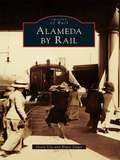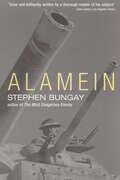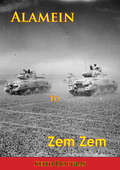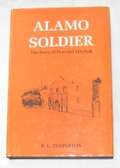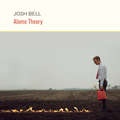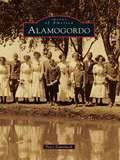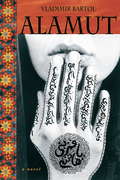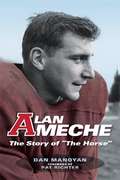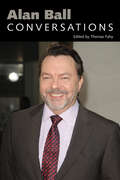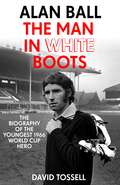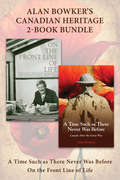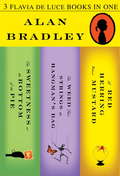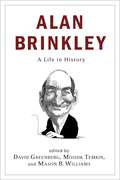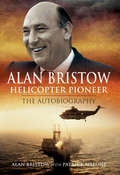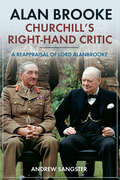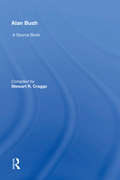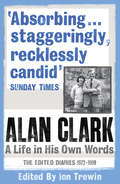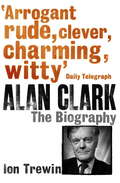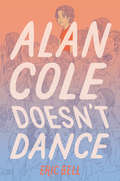- Table View
- List View
Alameda by Rail
by Bruce Singer Grant UteAcross the great bay from San Francisco, the city of Alameda evolved into an island hometown of fine Victorian and Craftsman architecture and a port containing a naval air station, shipbuilding center, and the winter home of the long-gone Alaska Packers fleet of "tall ships." But Alameda also was a busy railroad town. In 1864, a passenger railroad with a ferry connection created a commute to San Francisco. In 1869, the city became the first Bay Area terminus of the Transcontinental Railroad. Alameda became an island because a railroad allowed construction crews to dig a tidal canal, separating it from Oakland in 1902. Later generations rode steam, then electric, trains to a grand ferry pier where ornate watercraft guided them the 20 minutes to San Francisco. An auto tube, and later the San Francisco Oakland Bay Bridge, hastened the demise of ferry, then rail, operations before World War II.
Alamein
by Stephen BungayFrom the author of The Most Dangerous Enemy, a study of the history, strategy, and logistics of the pivotal World War II battles at El Alamein.El Alamein was the Second World War land battle Britain had to win. By the summer of 1942 Rommel’s German forces were threatening to sweep through the Western Desert and drive on to the Suez Canal, and Britain desperately needed a victory.In July, Rommel was halted. Then, in October, after twelve days of attritional fighting, Montgomery’s Eighth Army broke through the German and Italian lines at El Alamein. It was a turning-point in the war after which, in Churchill’s words, “we never had a defeat.”Stephen Bungay’s superbly readable narrative complements his definitive study of the Battle of Britain, The Most Dangerous Enemy, illuminating every aspect of this most famous episode of the Desert War, from the crucial logistics of keeping the distant armies supplied to the terror of battle in tormenting heat that was the soldier’s war.Praise for Alamein“Terse and brilliantly written by a thorough master of his subject.” —John Lukacs, Los Angeles Times“A brilliant balance between lucid analysis and piquant detail . . . masterly chapters.” —Lawrence James, Daily Mail (UK)“A broad and pacy overview in a short compass.” —Hew Strachan, Times Literary Supplement (UK)
Alamein to Zem Zem [Illustrated Edition]
by Keith DouglasIncludes the War in North Africa Illustration Pack - 112 photos/illustrations and 21 maps.Few records of war are a lucid, vivid and sensitively written as Keith Douglas' "Alamein to Zem Zem". The author himself was a man of great poetic gifts who had established himself as a leading light in the Oxford literary circles, tutored by no less a person than First World War veteran and acclaimed poet Edmund Blunden. A talent that did not outlast the war, killed in action in Normandy 1944, but his lasting legacy is contained in this exceptional book.Within days of the declaration of the Second World War Douglas had volunteered, chaffing at the bit to get at the Germans. Having passed out of the officer training course at Sandhurst, he was sent to the Middle East in 1941 to join his comrades in the Sherwood Foresters Yeomanry (a tank unit). He was disappointed to be given a staff appointment away from the fighting line; and during the Battle of El Alamein, he snapped and as he put it;"The battle of Alamein began on the 23rd of October, 1942. Six days afterwards I set out in direct disobedience of orders to rejoin my regiment. My batman was delighted with this manoeuvre. 'I like you, sir,' he said. 'You're shit or bust, you are.' This praise gratified me a lot."...and so began his odyssey began from the Alamein line to victory at Zem Zem. Critically acclaimed at the time of publication, and now widely regarded as a military classic."one of the very best prose accounts of fighting the last war."--Philip Toynbee, The Observer.
Alamo Soldier: The Story of Peaceful Mitchell, First Edition
by R. L. TempletonAlamo Soldier, The Story of Peaceful Mitchell is the true story of Napoleon Bonaparte Mitchell, the 17 year old long lean lad from Belvidere, Tennessee, the only man in the Alamo who didn't want to kill, didn't believe in violence, or the taking of a life. Too little is known of Napoleon Bonaparte Mitch¬ell. History records that he was one of the 13 men in Davy Crockett's Tennessee Mounted Volunteers who died defending the "Pallisade" wall of the Alamo.
Alamo Theory
by Josh Bell"Bell's work is a concoction of the surreal and the hyper-real, the hilarious and the devastating."-The New Yorker"One of the most tonally versatile young poets working today."-Boston Review"A contemporary knockout, Bell's poems run the gamut of good: they're seriously funny, bizarre, wry, ambitious, acrobatic, gorgeous. Sometimes they have zombies."-FlavorwireJoshua Bell's unnerving and darkly funny second collection of poems inhabits various personae-including a prominent series starring the garrulous and aging rock star Vince Neil from Mötley Crüe-through which he examines paranoid, misogynist, and murderous elements within contemporary American culture. Throughout are prose "movie poems" that feature zombies, a summer camp slasher, exorcism, and courtroom drama.From "The Creature":Like many humans, I enjoy lifting small, living things. Your wife qualifies, but doesn't like to be lifted. I guess it's probably because, as is true with many humans, your wife doesn't want to be eaten, and often we are lifted, by the bigger thing, right before it drops us on a rock and eats us. I understand, I say to your wife, lowering her body to the kitchen floor, her legs bending slowly as she takes back the weight I've returned to her, like an astronaut moving back into the gravity of the capsule...Josh Bell earned an MFA from the Iowa Writers' Workshop and a PhD from the University of Cincinnati. He was a member of the creative writing faculty at Columbia University and is currently Briggs Copeland Lecturer at Harvard.
Alamogordo
by Peter L. EidenbachIn 1898, the El Paso and Northeastern Railroad established New Mexico's first preplanned development community at Alamogordo. This city and its satellite communities of Tularosa, La Luz, and Cloudcroft are the only urban settlements in an area almost as large as Connecticut--the vast deserts and mountains of the Tularosa Basin are where people "climb for water and dig for wood." Alamogordo became the county seat after Otero County was created to modify the trial venue for the murder of Albert Fountain and his son Henry. West Texas ranching families moved into the Tularosa Basin in the 1880s and depended on ranching, farming, and tourism until World War II led to the creation of the Alamogordo Army Air Field (Holloman Air Force Base) and White Sands Proving Ground, the birthplace of the U.S. space and missile program. The first atomic explosion, Trinity, took place in White Sand's northwest corner on July 16, 1945. Col. John Stapp, pioneer of aerospace medicine, rode rocket sleds at the Holloman Test Track, leading to modern automotive seat belts.
Alamut
by Michael Biggins Vladimir BartolAlamut takes place in 11th Century Persia, in the fortress of Alamut, where self-proclaimed prophet Hasan ibn Sabbah is setting up his mad but brilliant plan to rule the region with a handful elite fighters who are to become his "living daggers." By creating a virtual paradise at Alamut, filled with beautiful women, lush gardens, wine and hashish, Sabbah is able to convince his young fighters that they can reach paradise if they follow his commands. With parallels to Osama bin Laden, Alamut tells the story of how Sabbah was able to instill fear into the ruling class by creating a small army of devotees who were willing to kill, and be killed, in order to achieve paradise. Believing in the supreme Ismaili motto "Nothing is true, everything is permitted," Sabbah wanted to "experiment" with how far he could manipulate religious devotion for his own political gain through appealing to what he called the stupidity and gullibility of people and their passion for pleasure and selfish desires. The novel focuses on Sabbah as he unveils his plan to his inner circle, and on two of his young followers -- the beautiful slave girl Halima, who has come to Alamut to join Sabbah's paradise on earth, and young ibn Tahir, Sabbah's most gifted fighter. As both Halima and ibn Tahir become disillusioned with Sabbah's vision, their lives take unexpected turns. Alamut was originally written in 1938 as an allegory to Mussolini's fascist state. In the 1960's it became a cult favorite throughout Tito's Yugoslavia, and in the 1990s, during the Balkan's War, it was read as an allegory of the region's strife and became a bestseller in Germany, France and Spain. Following the attacks of September 11, 2001, the book once again took on a new life, selling more than 20,000 copies in a new Slovenian edition, and being translated around the world in more than 19 languages. This edition, translated by Michael Biggins, in the first-ever English translation.
Alan Ameche
by Dan ManoyanThis is first biography of Alan “The Horse” Ameche, one of America’s great gridiron heroes. Born in 1933 to Italian immigrants, he grew up in Kenosha, Wisconsin, where he played for one of the state’s best-ever high school football teams. From there he went on to break Big Ten rushing records for the University of Wisconsin Badgers, leading them to the 1953 Rose Bowl and winning the 1954 Heisman Trophy. He earned his nickname “The Horse” for his tremendous training ethic, power, and stamina. In a professional career with the Baltimore Colts that lasted just six seasons before injury ended it, he was the 1955 NFL Rookie of the Year and went to the Pro Bowl five times. The 1958 championship game of the National Football League that pitted Ameche’s Colts against the New York Giants has often been called the NFL’s “Greatest Game Ever Played. ” It was the first national title game to be televised, and forty-five million people were watching. It was also the first-ever NFL game to go into sudden death overtime. Ameche and future Hall of Fame quarterback Johnny Unitas teamed up on several key plays in the decisive touchdown drive. Ameche’s dramatic one-yard plunge into the end zone ended the game at 8:15 of the overtime period, captured the attention of television viewers across the nation, and laid the groundwork for football to become the enormously popular and lucrative business it is today. Author Dan Manoyan has delved into Ameche’s history, interviewing the Ameche family, Kenosha friends, Wisconsin Badger players, and several of Ameche’s Baltimore Colts teammates-including NFL Hall of Fame members Lenny Moore, Gino Marchetti, Art Donovan, and Raymond Berry-to offer revealing insights about Alan Ameche the man. Manoyan gives a fuller picture of him as an Academic All-American, a devoted husband and father, a highly successful businessman after his football career, a pioneer in race relations, a patron of the arts, and a committed philanthropist.
Alan Apostrophe
by Barbara CooperA clever cast of characters is the key to this playful presentation of the rules of punctuation. Meet the Puncs is punctuation personified! Each delightfully illustrated member of the family has a fitting facial feature, and his or her brief biography is the picture of the perfect punctuation, with the character's corresponding mark prominently displayed. This captivating series will help even the youngest readers (and writers!) put punctuation in its place.
Alan Ball: Conversations (Television Conversations Series)
by Thomas FahyAlan Ball: Conversations features interviews that span Alan Ball's entire career and include detailed observations and insights into his Academy Award-winning film American Beauty and Emmy Award-winning television shows Six Feet Under and True Blood. Ball began his career as a playwright in New York, and his work soon caught the attention of Hollywood television producers. After writing for the sitcoms Grace Under Fire and Cybill, Ball turned his attention to the screenplay that would become American Beauty. The critical success of this film opened up exciting possibilities for him in the realm of television. He created the critically acclaimed show Six Feet Under, and after the series finale, he decided to explore the issue of American bigotry toward the Middle East in his 2007 play All That I Will Ever Be and the film Towelhead, which he adapted and directed in the same year. Ball returned to television once again with the series True Blood—an adaptation of the humorous, entertaining, and erotic world of Charlaine Harris’s vampire novels. In 2012 Ball announced that he would step down as executive producer of True Blood, in part, to produce both a new television series and his screenplay, What’s the Matter with Margie?
Alan Ball: The biography of the youngest 1966 World Cup Hero
by David TossellIt is a special footballer who wins the World Cup as a 21-year-old and ends a two-decade career as one of the most revered players in the history of four clubs. Former England captain Alan Ball was such a man: prodigy at Blackpool, youngest hero of 1966, Championship winner at Everton, British-record signing for the second time at Arsenal and veteran schemer for Southampton - not to mention footwear trend-setter. And all after being told he was too small to succeed in the game.Yet his years as a flat-cap wearing manager consisted mostly of relegation and promotion battles, some successful and some not, and plenty of frustration as he fought to produce winners in his own image and emulate the feats of his playing days. His life already touched tragically by the car crash that killed his father and the loss of his beloved wife Lesley to cancer, Ball died, aged only 61, after suffering a heart attack during a garden blaze.A decade on from his death, and drawing on interviews with family, friends and colleagues including Jimmy Armfield, Sir Geoff Hurst, George Cohen, Gordon Banks, Joe Royle, Mick Channon, Lawrie McMenemy, Francis Lee, George Graham, Frank McLintock, Matthew Le Tissier and many more, Alan Ball: The Man in White Boots is the definitive study of one of English football's most enduring figures.
Alan Bean: Astronaut and Artist (Fountas & Pinnell Classroom, Guided Reading)
by Suzanne SladeNIMAC-sourced textbook. Art from Outer Space. Twelve American astronauts have walked on the moon, but only one used art to share his incredible adventures in space. Painting on a textured background made with tools he used on the moon, Alan Bean created paintings that are out of this world!
Alan Bennett: A Critical Introduction (Studies in Modern Drama)
by Joseph O'MealyAlan Bennett is perhaps best known in the UK for the BBC production of his Talking Heads TV plays, while the rest of the world may recognize him for the film adaptation of his play, The Madness of King George. O'Mealy points out that Bennett is a social critic strongly influenced by Beckett and Swift, interested in depicting and analyzing the role playing of everyday life, a'la sociologist Ervin Goffman.
Alan Bowker's Canadian Heritage 2-Book Bundle: A Time Such as There Never Was Before / On the Front Line of Life
by Alan BowkerIn this two-book bundle, Alan Bowker sheds new light on two subjects with a surprising connection: the great Canadian writer Stephen Leacock and the rise of Canada on the world stage, which Leacock profiled with keen wit and observational skill. With Bowker as your guide, explore what it was really like to live through the great upheaval that pushed Canada to come into its own on the world stage. A Time Such as There Never Was Before Ottawa Book Award 2015 — Shortlisted The years after World War I were among the most tumultuous in Canadian history: a period of unremitting change, drama, and conflict. They were, in the words of Stephen Leacock, “a time such as there never was before.” The war had been a great crusade, and its end was supposed to bring a world made new. But the conflict had cost sixty thousand Canadian lives, with many more wounded, and had stirred up divisions in the young, diverse country. With Canada struggling to define itself, labour, farmers, business, the church, social reformers, and minorities all held extravagant hopes, irrational fears, and contradictory demands. Whose hopes would be realized, and whose dreams would end in disillusionment? Which changes would prove permanent and which would be transitory? A Time Such As There Never Was Before describes how this exciting period laid the foundation of the Canada we know today. On the Front Line of Life In the last decade of his life, Stephen Leacock turned to writing informal essays that blended humour with a conversational style and ripened wisdom to address issues he cared about most — education, literature, economics, Canada and its place in the world — and to confront the joys and sorrows of his own life. With an introduction that sets them in the context of his life, thoughts and times, these essays reveal a passionate, intelligent, personal Leacock, against a backdrop of Depression and war, finding hope and conveying the timeless message that only the human spirit can bring social justice, peace, and progress.
Alan Bradley's 3-Book Bundle (A Flavia de Luce Novel #1, 2, 3)
by Alan Bradley<P>New York Times bestselling author Alan Bradley has enchanted readers worldwide with one of the most award-winning mystery series ever. <P>Featuring the irresistible, incorrigible eleven-year-old Flavia de Luce, whom the Chicago Sun-Times called "a delightful, intrepid, acid-tongued new heroine," the family de Luce lives on the once glorious, now crumbling estate of Buckshaw, in the bucolic English hamlet of Bishop's Lacey, where murder happens more than it should and the brilliant amateur detective (and dedicated poison enthusiast) spends equal time dodging her older sisters and solving the most ghastly of crimes. <P>For a captivating introduction to Flavia's world, here's a convenient ebook bundle of the first three novels of this beguiling series: The Sweetness at the Bottom of the Pie, The Weed That Strings the Hangman's Bag, and A Red Herring Without Mustard. Includes an exclusive excerpt from Alan Bradley's forthcoming Flavia de Luce mystery, I Am Half-Sick of Shadows, on sale November 1, 2011
Alan Brinkley: A Life in History
by Williams David Greenberg Temkin Moshik Mason B.Few American historians of his generation have had as much influence in both the academic and popular realms as Alan Brinkley. His debut work, the National Book Award–winning Voices of Protest, launched a storied career that considered the full spectrum of American political life. His books give serious and original treatments of populist dissent, the role of mass media, the struggles of liberalism and conservatism, and the powers and limits of the presidency. A longtime professor at Harvard University and Columbia University, Brinkley has shaped the field of U.S. history for generations of students through his textbooks and his mentorship of some of today’s foremost historians. <P><P>Alan Brinkley: A Life in History brings together essays on his major works and ideas, as well as personal reminiscences from leading historians and thinkers beyond the academy whom Brinkley collaborated with, befriended, and influenced. Among the luminaries in this volume are the critic Frank Rich, the journalists Jonathan Alter and Nicholas Lemann, the biographer A. Scott Berg, and the historians Eric Foner and Lizabeth Cohen. Together, the seventeen essays that form this book chronicle the life and thought of a working historian, the development of historical scholarship in our time, and the role that history plays in our public life. At a moment when Americans are pondering the plight of their democracy, this volume offers a timely overview of a consummate student—and teacher—of the American political tradition.
Alan Bristow, Helicopter Pioneer: The Autobiography
by Patrick Malone Alan Bristow&“You could be forgiven for taking Bristow&’s story as the invention of an action thriller writer . . . One of the best flying books you&’ll ever read.&” —Pilot Magazine Alan Bristow was a truly remarkable man. As a merchant navy officer cadet during the war, he survived two sinkings, played a part in the evacuation of Rangoon and was credited with shooting down two Stukas in North Africa. He joined the Fleet Air Arm and trained as one of the first British helicopter pilots, becoming the first man to land a helicopter on a battleship and Westland&’s first helicopter test pilot. He flew in France, Holland, Algeria, Senegal and elsewhere, narrowly escaping many helicopter crashes before winning the Croix de Guerre evacuating wounded French soldiers in Indochina. For four years he flew for Aristotle Onassis&’s pirate whaling fleet in Antarctica before joining Douglas Bader and providing support services to oil drillers in the Persian Gulf. Out of that grew Bristow Helicopters Ltd, the largest helicopter company in the world outside America. Bristow&’s circle included the great helicopter pioneers such as Igor Sikorsky and Stan Hiller, test pilots like Harold Penrose and Bill Waterton, Sheiks and Shahs and political leaders, business giants like Lord Cayzer and Freddie Laker, and the author James Clavell, a lifelong friend whose book Whirlwind was a fictionalized account of Bristow&’s overnight evacuation of his people and helicopters from revolutionary Iran. Bristow and precipitated the Westland Affair when he made a takeover bid which eventually led to the resignation of Michael Heseltine and Leon Brittain, and almost to the downfall of Margaret Thatcher.&“Has all the ingredients of a bestselling novel.&” —Firetrench
Alan Brooke—Churchill's Right-Hand Critic: A Reappraisal of Lord Alanbrooke
by Andrew SangsterThis new biography of Churchill&’s top WWII advisor is &“an excellent book for anyone interested in military leadership&” (The NYMAS Review). Voted the greatest Briton of the twentieth century, Winston Churchill has long been credited with almost single-handedly leading his country to victory in World War II. But without Alan Brooke, a skilled tactician, at his side the outcome might well have been disastrous. Brooke, Chief of the Imperial General Staff, more often than not served as a brake on some of Churchill&’s more impetuous ideas. However, while Brooke&’s diaries reveal his fury with some of Churchill&’s decisions, they also reveal his respect and admiration for the wartime prime minister. In return Churchill must surely have considered Brooke one of his most difficult subordinates—but later wrote that he was &“fearless, formidable, articulate, and in the end convincing.&” As CIGS, Brooke was integral to coordination between the Allied forces, and so had to wrestle with the cultural strategy clash between the British and Americans. Comments in his diaries offer up his opinions of both his British and American military colleagues—his negative assessments of Mountbatten&’s ability, and acerbic comments on the difficult character of de Gaulle and the weaknesses of Eisenhower. Conversely, he was clearly overindulgent in the face of Montgomery&’s foibles. Brooke was often seen as a stern and humorless figure, but a study of his private life reveals a little-seen lighter side, a lifelong passion for birdwatching, and abiding love for his family. The two tragedies that befell his immediate family were a critical influence on his life. Andrew Sangster completes this new biography with a survey of the way various historians have assessed Brooke, explaining how he has lapsed into seeming obscurity in the years since his crucial part in the Allied victory in World War II.
Alan Bush: A Source Book
by Stewart R. CraggsBorn in 1900, Alan Bush, the English composer, conductor and pianist, studied with Corder and Matthay, and privately with John Ireland. He was appointed professor of harmony and composition at the Royal Academy of Music in 1925, a post he held until 1978. In 1929-31, he continued to study at Berlin University and had piano lessons with Moiseiwitsch and Schnabel. The present Source Book documents his works (many of which reflect his Communist sympathies) and the many arrangements of music by other composers. A wealth of detail is provided, including printed scores, CD recordings, bibliographical material and manuscript scores and their locations, the majority of which have been deposited recently in the British Library by the Bush family. A chronology of the composer's life draws on many sources including letters and scrapbooks.
Alan Clark: A Life In His Own Words
by Alan Clark Ion TrewinSome of the most talked about books of recent years, Alan Clark's diaries provide a witty and irreverant insider's account of political life in Britain. Now in one volume.'From the moment the first scabrous and brilliant volume was published, people wanted more. Now they have it and they will not be disappointed... These diaries are not wonderful simply because they show a politician unafraid to say what he thinks, and refusing to suck up to those whom he represents. They are great because they show all sides of a man who was, within his complex personality, arrogant, sensitive, loyal, unfaithful, patriotic, selfish, selfless, and - at all times - completely Technicolour' Simon Heffner, DAILY MAIL
Alan Clark: A Life in his Own Words
by Alan ClarkSome of the most talked about books of recent years, Alan Clark's diaries provide a witty and irreverant insider's account of political life in Britain. Now in one volume.'From the moment the first scabrous and brilliant volume was published, people wanted more. Now they have it and they will not be disappointed... These diaries are not wonderful simply because they show a politician unafraid to say what he thinks, and refusing to suck up to those whom he represents. They are great because they show all sides of a man who was, within his complex personality, arrogant, sensitive, loyal, unfaithful, patriotic, selfish, selfless, and - at all times - completely Technicolour' Simon Heffner, DAILY MAIL
Alan Clark: The Biography
by Ion TrewinThe unknown life of Alan Clark, celebrated diarist, womaniser, Tory MP and controversial minister in Mrs Thatcher's governments.Celebrated diarist, famous womaniser, Tory MP and controversial minister - a castle-owning toff and lecherous cad to some, to others a colourful and life-enhancing figure - Alan Clark was politically incorrect before the term was invented. He is best remembered for his sensational diaries - but what of the man? Alan Clark rarely spoke about his upbringing, even to his family. Was it as unhappy as he hinted? Ion Trewin has had unrestricted access to extensive family papers (including twenty years of unpublished diaries). He has talked to politicians, to those who knew him at the prep school which burnt down, to friends at Eton and Oxford, and to some of the many women he found impossible to resist despite a loving marriage of forty-one years. From his struggles to teach himself to write to formidable historian and diarist, from his enthusiasm for Margaret Thatcher to the 'drunk at the Commons dispatch box' affair, ALAN CLARK THE BIOGRAPHY is a revealing and absorbing account of a remarkable and unforgettable man.
Alan Clark: The Biography
by Ion TrewinThe unknown life of Alan Clark, celebrated diarist, womaniser, Tory MP and controversial minister in Mrs Thatcher's governments.Celebrated diarist, famous womaniser, Tory MP and controversial minister - a castle-owning toff and lecherous cad to some, to others a colourful and life-enhancing figure - Alan Clark was politically incorrect before the term was invented. He is best remembered for his sensational diaries - but what of the man? Alan Clark rarely spoke about his upbringing, even to his family. Was it as unhappy as he hinted? Ion Trewin has had unrestricted access to extensive family papers (including twenty years of unpublished diaries). He has talked to politicians, to those who knew him at the prep school which burnt down, to friends at Eton and Oxford, and to some of the many women he found impossible to resist despite a loving marriage of forty-one years. From his struggles to teach himself to write to formidable historian and diarist, from his enthusiasm for Margaret Thatcher to the 'drunk at the Commons dispatch box' affair, ALAN CLARK THE BIOGRAPHY is a revealing and absorbing account of a remarkable and unforgettable man.
Alan Cole Doesn't Dance
by Eric BellTo heartwarming cheer, Alan Cole came out to his school. But now what?In this follow-up novel to Alan Cole Is Not a Coward, Eric Bell deftly explores with nuance and humor how the first step to complete self-acceptance may mean actually putting your feet on the dance floor. This laugh-out-loud and poignant tale is perfect for fans of Gary Schmidt and Jerry Spinelli.Alan Cole has a problem: Ron McCaughlin. Ever since Alan revealed he’s gay, Ron has been bullying Alan with relentless fury. Alan can’t tell his parents why he’s really coming home with bruises—because they still don’t know the truth about him.Yet buoyed by the support of his classmates and with his friends Zack and Madison by his side, Alan thinks he can withstand the bullying and—just maybe—break through to Ron. But all things come to a head when Alan’s father asks that he take June Harrison to the upcoming Winter Dance. Never mind that Alan has two left feet, does not like girls, and might be developing feelings for a new boy at school.This resounding tale about friendship, family, and the many meanings of bravery will leave readers rooting for Alan and his gang of proud misfits once more.
